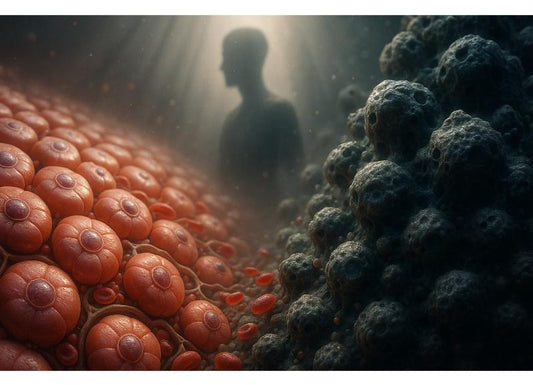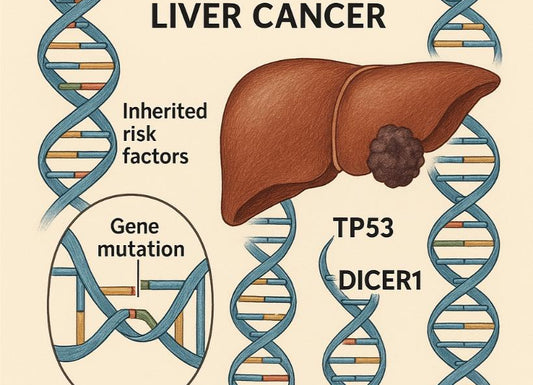Is Fatty Liver Reversible?
 Written By
Blen Shumiye, MD
Written By
Blen Shumiye, MD

You go for a routine checkup, and your doctor mentions you have fatty liver. It’s a phrase that instantly brings concern yet most people with it have no symptoms at all. You might feel perfectly fine, but under the surface, your liver is struggling with something preventable. However, is fatty liver reversible?
Fatty liver disease has quietly become one of the most common liver problems worldwide. The good news? In many cases, it’s not a life sentence. With the right knowledge and action, you can often reverse fatty liver and restore your liver’s health naturally.
This article explains what fatty liver really means, how it develops, what science says about reversing it, and the specific lifestyle steps that make the biggest difference.
What is fatty liver and why does it happen?
Your liver is one of your body’s hardest-working organs; it filters toxins, processes nutrients, and supports digestion. But when too much fat builds up inside it, a condition called fatty liver (or hepatic steatosis) develops.
This happens when the liver starts storing more fat than it can burn. Over time, that excess fat can cause inflammation and scarring if left unchecked.
There are two main types:
-
Non-alcoholic fatty liver disease (NAFLD): The most common form, linked to diet, weight, and metabolic health.
-
Alcohol-related fatty liver disease (AFLD): Caused by regular or heavy alcohol use.
According to a study, about 1 in 4 adults now live with some form of fatty liver—but most don’t realize it.
Can you really reverse fatty liver?
Yes. In most early and moderate cases, fatty liver can be reversed especially when you identify and treat the root cause.
Your liver has a remarkable ability to heal itself. When you reduce the fat load, improve your diet, and move your body regularly, new healthy liver cells replace the damaged ones.
Clinical research shows that:
-
Losing just 5–10% of your body weight can normalize liver enzymes.
-
Cutting back on added sugars and alcohol can rapidly reduce fat in liver cells.
-
Consistent exercise improves insulin sensitivity, a major trigger of fat accumulation.
The key is consistency. Your liver can’t heal overnight, but it absolutely can recover over time.
To better understand your liver status, you can also explore At-Home Liver Tests: A Comprehensive Guide for an easy, science-based way to check your liver health from home.
What causes fat to build up in your liver?
Several lifestyle and metabolic factors contribute, including:
-
High sugar intake: Especially from soft drinks and sweets containing fructose. If you’re monitoring your sugar intake or insulin resistance, you may find our article on Understanding Glucose in Urine: Causes, Symptoms, and Treatment especially helpful.
-
Insulin resistance: When your cells no longer respond well to insulin, causing more fat storage.
-
Low activity levels: Sedentary habits reduce fat-burning capacity.
-
Excess weight or belly fat: Even modest weight gain can raise risk.
-
Poor sleep or chronic stress: Both affect hormones that regulate fat metabolism.
According to a study in the Journal of Hepatology, these same factors are reversible through targeted lifestyle interventions.
What are the stages of fatty liver disease?
Fatty liver develops gradually, moving through four stages:
-
Simple steatosis: Fat accumulates, but there’s little inflammation. This stage is fully reversible.
-
Non-alcoholic steatohepatitis (NASH): The liver becomes inflamed, and cells start to get damaged.
-
Fibrosis: Scar tissue begins to form. Damage is still partially reversible with treatment.
-
Cirrhosis: Widespread scarring replaces healthy tissue. This stage is permanent but progression can be slowed.
Early diagnosis and lifestyle action make all the difference.
How can you tell if you have fatty liver?
Most people feel no symptoms. However, you may notice:
-
Fatigue or low energy
-
Discomfort on the upper right side of your abdomen
-
Unexplained weight gain
-
Difficulty concentrating (“brain fog”)
Since these signs are vague, fatty liver is often found during routine blood tests showing elevated liver enzymes (ALT, AST) or imaging such as an ultrasound or FibroScan.
If your doctor suspects inflammation or fibrosis, they may recommend additional tests like an MRI or liver biopsy.
How long does it take to reverse fatty liver?
Healing time depends on your starting point and how consistent you are. Many people see measurable improvement within three to six months.
-
Mild fatty liver: Often reverses within 2–3 months with consistent diet and exercise.
-
NASH (inflammation): Typically takes 6–12 months of sustained effort to improve.
-
Fibrosis: even after a year or more, may improve or regress, but is unlikely to fully reverse to a completely normal liver structure if advanced to the stage of cirrhosis.
Remember, you’re working with one of the most resilient organs in your body. Give it the right environment, and it will respond.
What’s the best diet to reverse fatty liver?

Your liver thrives on whole, unprocessed foods that lower inflammation and improve insulin sensitivity.
1. Follow a Mediterranean-style pattern
This eating style is one of the best studied for liver health. It focuses on:
-
Colorful fruits and vegetables
-
Whole grains like oats and quinoa
-
Healthy fats (olive oil, nuts, seeds, avocados)
-
Lean proteins (fish, legumes, poultry)
-
Limited red or processed meat
2. Reduce added sugars
Fructose from sweetened drinks and desserts goes straight to your liver and turns into fat. Eliminating sugary beverages is often the quickest way to reduce liver fat.
3. Choose smart carbohydrates
Opt for complex carbs brown rice, beans, lentils, and sweet potatoes—over white bread or pastries.
4. Include liver-friendly nutrients
-
Omega-3 fats from salmon, chia, or flaxseed
-
Vitamin E (for non-diabetic individuals)
-
Coffee, which studies show can protect against fibrosis
-
Green tea, rich in antioxidants
What kind of exercise helps your liver heal?
Movement improves insulin sensitivity, helps you burn stored fat, and reduces liver inflammation.
-
Aerobic exercise: 150 minutes per week of brisk walking, cycling, or swimming can reduce liver fat by 20–30%.
-
Strength training: Lifting weights or using resistance bands twice weekly helps your body process glucose better.
-
Everyday movement: Take short walks after meals and avoid long sitting periods.
The goal is to move your body daily, not to train for a marathon.
How much weight should you lose to improve fatty liver?

Even modest weight loss makes a big difference.
-
5% reduction → lowers fat in liver cells
-
7–10% → reduces inflammation and early scarring
Aim for slow, steady progress about 1–2 pounds per week. Rapid crash diets can worsen liver stress.
Should you stop drinking alcohol completely?
Yes, especially during recovery. Alcohol makes your liver work overtime to process toxins, worsening inflammation.
Many people see dramatic improvement in liver enzyme levels after just one to two months of abstinence.
Once your liver normalizes, occasional light drinking may be safe for some but always discuss it with your healthcare provider first.
Are there any medications or supplements that help?
There’s no FDA-approved medication for NAFLD yet, but some treatments show promise.
Doctors may prescribe:
-
Metformin for insulin resistance or diabetes
-
GLP-1 agonists like semaglutide for obesity and NAFLD
-
Vitamin E for non-diabetic people with NASH
Supplements such as milk thistle or curcumin have mild evidence for benefit, but they should never replace medical guidance. Always check with your provider that some “liver detox” pills can actually be harmful.
How do sleep and stress affect fatty liver?

Both play a quiet but powerful role.
-
Sleep: Poor sleep increases insulin resistance and cravings. Aim for 7–9 hours nightly.
-
Stress: Chronic stress elevates cortisol, encouraging fat storage around your liver. Try mindfulness, yoga, or deep-breathing breaks.
-
Gut health: Probiotic foods like yogurt, kefir, and kimchi help reduce liver inflammation through the gut-liver connection.
Small daily changes, consistent bedtime, short walks, deep breaths can have big results over time.
What happens if fatty liver isn’t treated?
Untreated fatty liver can progress to inflammation, fibrosis, and eventually cirrhosis. It also increases your risk for type 2 diabetes, heart disease, and high blood pressure.
But the encouraging truth is that most people who make changes early never reach those stages. Prevention and early action truly work.
Because liver and kidney function are closely connected, it’s also worth reviewing The Complete Guide to At-Home Kidney Function Tests to keep your whole metabolic system in check.
What’s a realistic step-by-step plan to reverse fatty liver?
Here’s how to get started:
-
See your doctor for lab work and an ultrasound.
-
Set achievable goals 5–10% weight loss if needed.
-
Clean up your plate, cut sugary drinks, eat real food, and prioritize veggies.
-
Move daily aim for 30 minutes of activity, even walking.
-
Track your progress and monitor liver enzymes every 3–6 months.
-
Avoid alcohol and unnecessary supplements.
-
Celebrate progress healing takes time, not perfection.
How can you maintain liver health long-term?
Once you’ve reversed fatty liver, focus on keeping it that way:
-
Continue a whole-food, balanced diet
-
Keep your weight stable
-
Limit alcohol to special occasions
-
Stay active most days
-
Manage stress and get regular sleep
-
Schedule yearly liver function tests
These habits protect not only your liver but also your heart, metabolism, and energy levels.
Key takeaways
-
Fatty liver is common but reversible, especially in early stages.
-
Weight loss, balanced nutrition, and regular movement are the cornerstones of recovery.
-
Avoid alcohol and high-sugar foods to give your liver a rest.
-
Track your progress through regular blood work and imaging.
-
Consistency and self-care—not perfection make all the difference.
Related resources
-
Can Your Liver Regenerate? Useful Diet, Lifestyle Changes, and Medical Support Liver Repair
-
Home Liver Test: Guide to At-Home Liver Function Kits, Accuracy, Costs, and Health Monitoring
References
5 things you need to know about fatty liver disease (and how to reverse it). (2021). @Bswhealth. https://www.bswhealth.com/blog/5-things-you-need-to-know-about-fatty-liver-disease-and-how-to-reverse-it#:~:text=Is%20fatty%20liver%20disease%20reversible,5%25%20of%20your%20starting%20weight.
Gupta, S. (2016, September 6). Can Fatty Liver Be Reversed? Causes and Treatments. GoodRx. https://www.goodrx.com/conditions/liver-disease/how-can-i-reverse-fatty-liver-disease?srsltid=AfmBOorowo2GVWW_lVS83SxvsL4ThOfZRITPpRUYqz_IDqxnqnHVaXwx
Nonalcoholic Fatty Liver Disease. (2024, October 7). Hopkinsmedicine.org. https://www.hopkinsmedicine.org/health/conditions-and-diseases/nonalcoholic-fatty-liver-disease
You can reverse fatty liver disease through your diet – here’s how. (2025). BBC Food. https://www.bbc.co.uk/food/articles/fatty_liver_disease#:~:text=%E2%80%9CThe%20Mediterranean%20diet%20is%20one,reduce%20fat%20in%20the%20liver.

Dr. Blen is a seasoned medical writer and General Practitioner with over five years of clinical experience. She blends deep medical expertise with a gift for clear, compassionate communication to create evidence-based content that informs and empowers. Her work spans clinical research, patient education, and health journalism, establishing her as a trusted voice in both professional and public health spheres.



